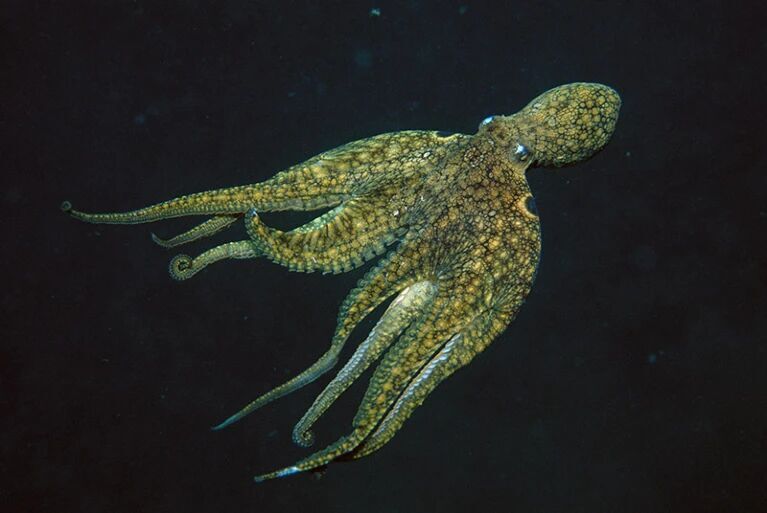
Researchers have found the oldest known sex chromosome in animals — the octopus Z chromosome — which first evolved in an ancient ancestor of octopuses around 380 million years ago. The findings1 answer a long-standing question about how sexual development is directed in the group of sea creatures that includes octopuses and squid.
"We stumbled upon probably the oldest animal sex chromosome known to date," says evolutionary geneticist Andrew Kern at the University of Oregon in Eugene. "Sex determination in cephalopods, such as squids and octopi, was a mystery — we found the first evidence that genes are in any way involved."
In many animals, including most mammals and some insects, sex chromosomes determine whether an individual becomes male or female. In humans, females usually have two X sex chromosomes, and males typically have one X and one Y sex chromosome. But for some animal groups, such as cephalopods — which include soft-bodied animals such as squids and octopuses, as well as hard-shelled creatures called nautiluses — researchers have been unsure about how individuals become male or female. Scientists generally thought that environmental factors such as temperature play a part — as they do for some reptiles and fish.
Catching Zs
In 2015, researchers reported2 sequencing a cephalopod genome for the first time — that of a male California two-spot octopus, Octopus bimaculoides. In the latest study1, Kern and his colleagues mapped the genome of a female California two-spot octopus. They discovered 29 pairs of chromosomes and one single chromosome, called chromosome 17. By contrast, the male octopus genome had two copies of chromosome 17. That difference led the researchers to hypothesize that chromosome 17 was a sex chromosome.
Sequencing the DNA of other O. bimaculoides octopuses confirmed the idea. Males always had two copies of chromosome 17, whereas females had one copy. Chromosome 17 also contained several genes similar to those that encode proteins in human reproductive tissues, including a protein found in sperm. In animals including birds and butterflies, males similarly have two Z sex chromosomes, whereas females have one Z and one W sex chromosome.
"It very much looked like we were looking at a Z chromosome in O. bimaculoides," says Kern. But the researchers failed to find a W chromosome in the female octopuses. That suggested that males have ZZ sex chromosomes, whereas females are ZO, with the O denoting the lack of a W chromosome.
Well conserved
The team also found Z chromosomes in some other octopus and squid species — but not in a nautilus.
"This pattern suggests that the Z chromosome evolved once in the lineage that led to modern squid and octopuses — after this lineage split off from hard-shelled nautiloids," says Kern. This means the Z chromosome first appeared between 450 million and 250 million years ago and has been retained to the present day, he says. Previously, the oldest known animal sex chromosome was thought to have evolved in sturgeon fish about 180 million years ago3.
This chromosome is profoundly evolutionarily conserved, says Matthias Stöck, an evolutionary geneticist at the Leibniz-Institute of Freshwater Ecology and Inland Fisheries in Berlin.
"The data presented in this paper definitely suggests that cephalopods have among the oldest sex chromosomes in both animals and plants," says Sarah Carey, who studies the evolution of sex chromosomes at the HudsonAlpha Institute for Biotechnology in Huntsville, Alabama. "This is such a cool time to be working on the genetics of sex chromosomes."
References:
- Coffing., G. C. et al. Preprint at bioRxiv https://doi.org/10.1101/2024.02.21.581452 (2024).
- Albertin, C. B. et al. Nature 524, 220-224 (2015).Article PubMed Google Scholar
- Kuhl, H. et al. Phil. Trans. R. Soc. B 376, 20200089 (2021).Article PubMed Google Scholar




On the other hand, maybe this could be something related to the legends of Leviathan... After all, God made two of them, and then cast them into the sea.